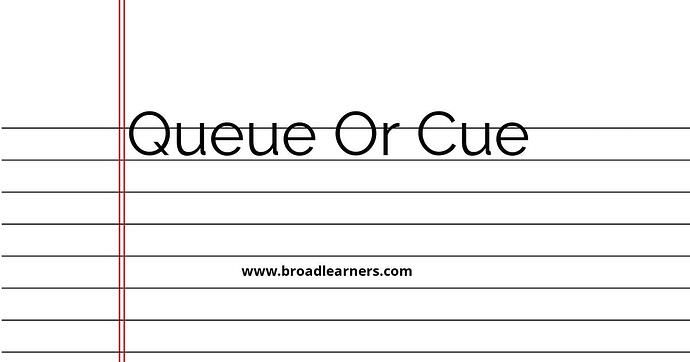'Queue' and 'cue' are commonly confused words in English grammar. Understanding the difference between 'queue' and 'cue' is important to use them correctly in written and spoken English.
'Queue' is a noun that refers to a line of people or vehicles waiting for something. It can also be used as a verb to mean to form or wait in a line. 'Queue' is commonly used in situations where people or things are waiting their turn.
'Cue' is a noun that refers to a signal or prompt for someone to do or say something. It can also be used as a verb to mean to give a signal or prompt. 'Cue' is commonly used in situations where someone is being prompted or guided.
Let's take a closer look at the meanings and usage of 'queue' and 'cue'.
| 'Queue' | 'Cue' |
|---|---|
| The word 'queue' is used to refer to a line of people or vehicles waiting for something. | The word 'cue' is used to refer to a signal or prompt for someone to do or say something. |
|
|
To remember the difference between 'queue' and 'cue', it can be helpful to think of 'queue' as a line of people waiting their turn, and 'cue' as a signal or prompt for someone to do something.
Here are some examples of correct usage:
- I joined the queue for the concert tickets.
- The director gave the actors their cues for the next scene.
- There is a long queue at the airport security checkpoint.
- The coach gave the team a cue to start the play.
Remembering the correct usage of 'queue' and 'cue' will improve your grammar and communication skills.
